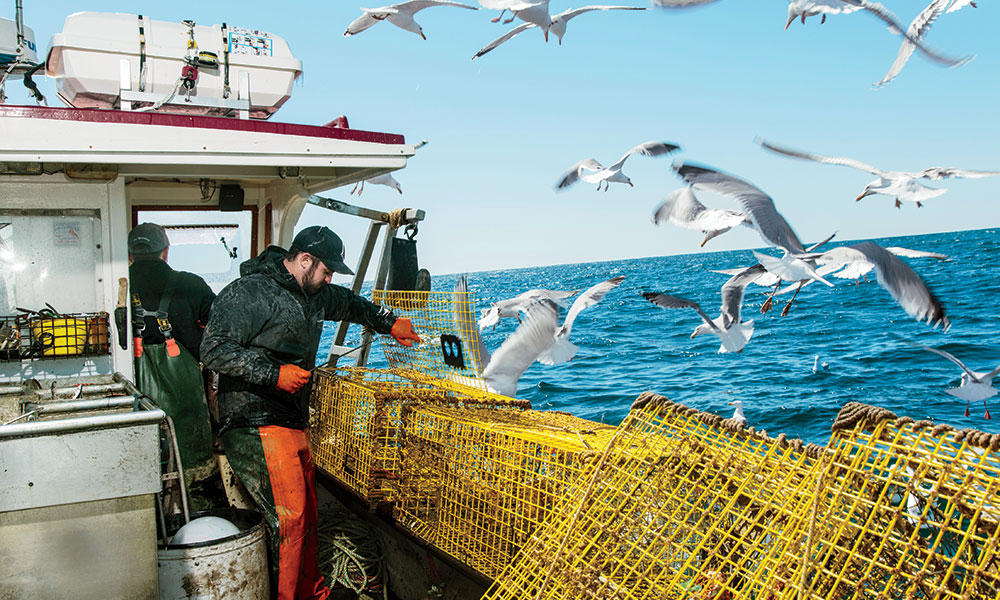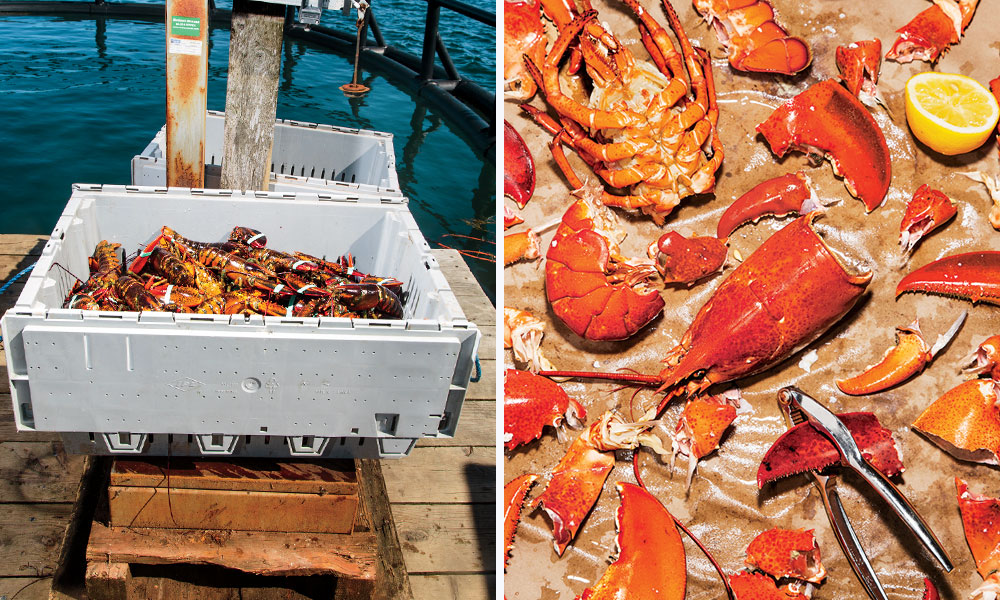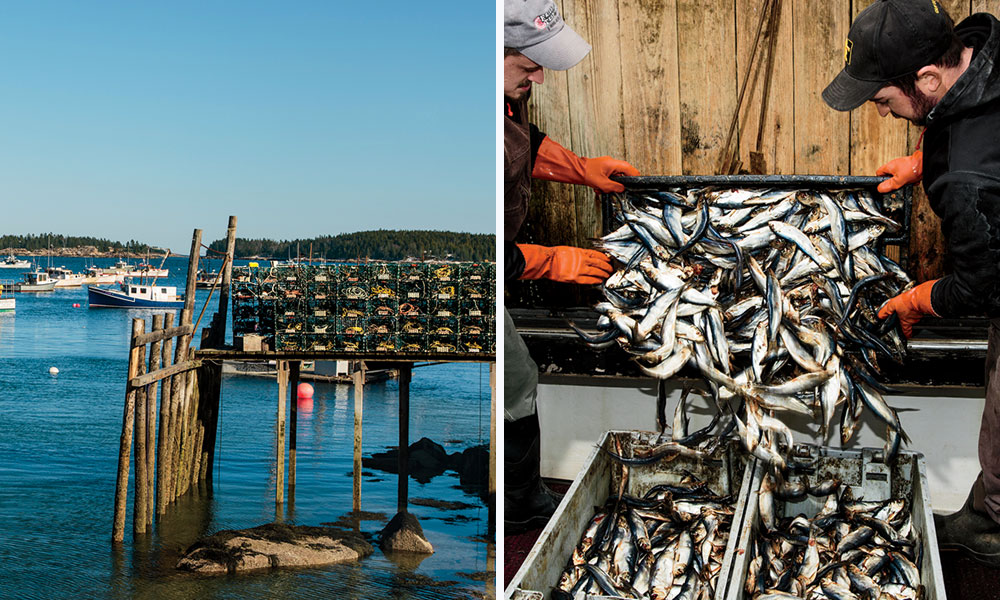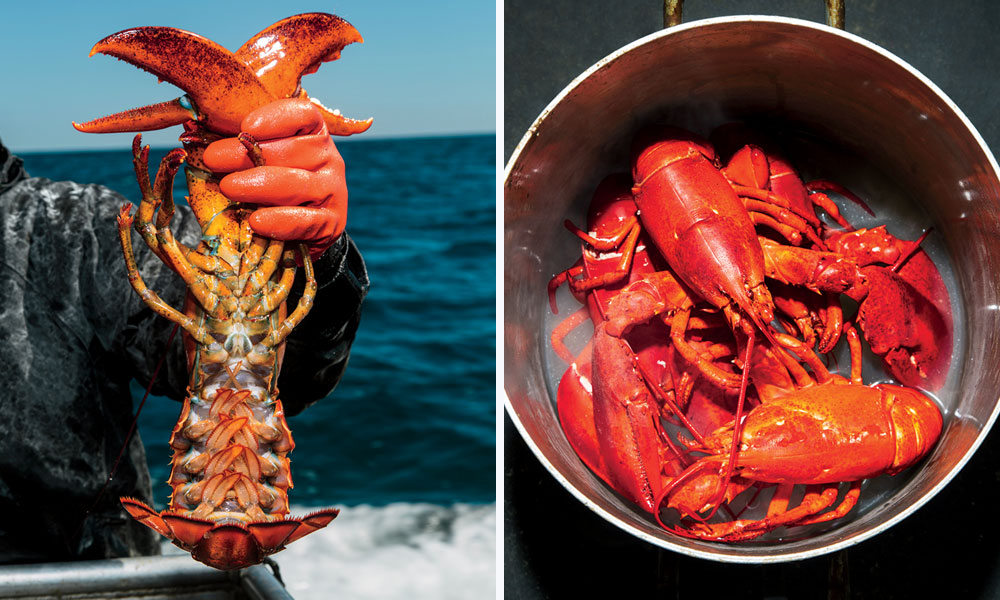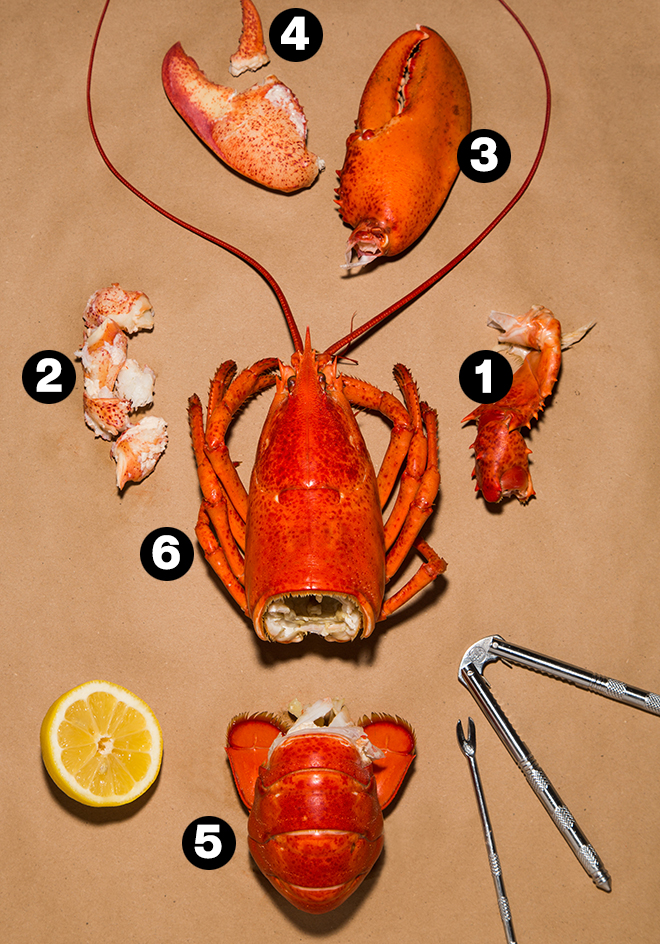Now is a good time to start boiling water. Vast numbers of Maine lobster (Homarus americanus) are likely to flood the market in mid-July. Supply up, price down—it’s simple crustacean-omics. That means that guys like Ethan Turner and Deven Haskell will haul cage after cage from the coastal waters off Stonington, Maine. It’s a life that lobstermen love, harvesting a succulent protein you should love. Follow their journey in the slideshow below. Then eat (really, really) well.
Lobster meat tastes best when prepared simply, says Theresa Gove-Eaton, manager at the Harbor Cafe in Stonington, Maine. Boil the creature whole for 20 minutes (or until you can easily pluck a feeler from its face). Most people miss the meat in the body, fins, and legs, says Gove-Eaton. Drawn butter or lemon juice is optional.
Whether you prefer the northern lobster, with its meaty claws, or the more tropical spiny lobster, which is basically tail meat, make sure you eat yours fresh: This seafood spoils quickly, so buy it (alive) the day you plan to dine. Squeamish about killing ’em? Get over it. The sea bugs are cannibals! Put that pot on the stove!




